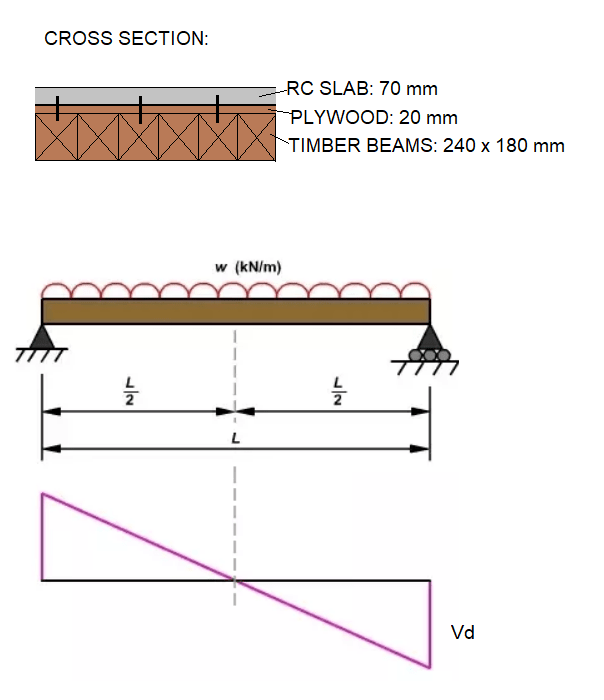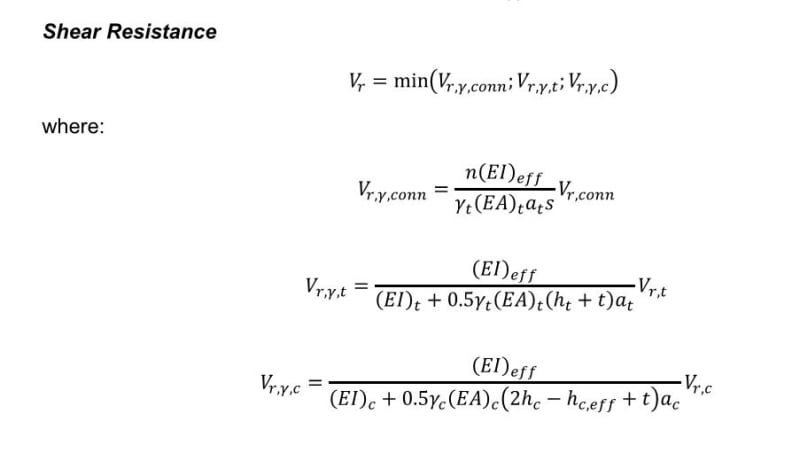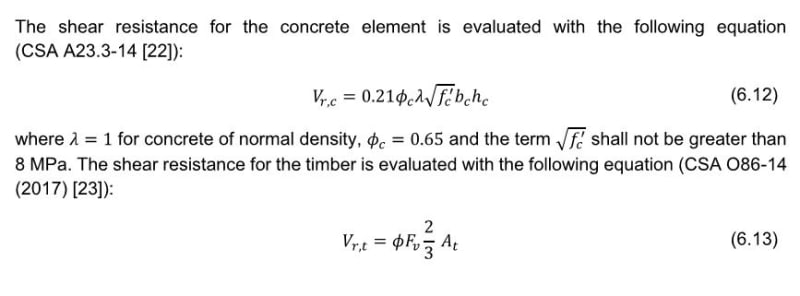greznik91
Structural
- Feb 14, 2017
- 186
Timber beams 180 x 240 (no spacing between), on top plywood and RC slab (70 mm thic). Connection between slab and timber are nails as shown bellow.
How do I calculate shear capacity per 1,00 m (kN/m) for such composite ceiling?


How do I calculate shear capacity per 1,00 m (kN/m) for such composite ceiling?




